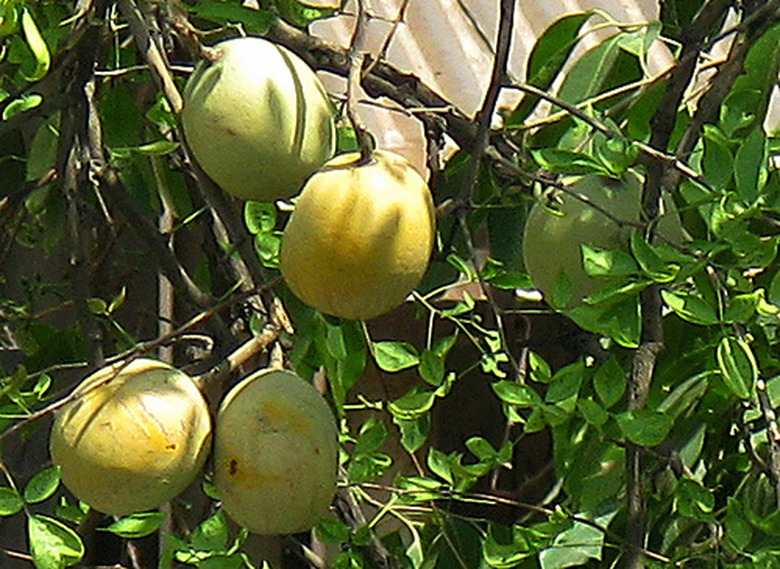When To Harvest Mango
Things Needed
- Mango tree
- Fertilizer
- Water
- Thrasher
The mango tree is a shade tree that is native to southern Asia and India. Requiring direct sun and eternally warm climates, mangos are fragile to cold temperatures and require warm, dry weather to produce fruit. Since mango is a rather heavy fruit when ripe and hanging from the branches, harvesting mango is rather simple. However, the success and sustainability of a mango harvest is directly related to the health, care and maintenance of the overall tree.
Step 1
Harvest mangos approximately 100 to 150 days after the flowering stage is completed. In most cases, the flowering blooms will develop fruit. You will see the fruit begin to fill and expand in size. Check mangos approximately 3 months into the growing process. A ripened mango will be somewhat soft to the touch.
- The mango tree is a shade tree that is native to southern Asia and India.
- Harvest mangos approximately 100 to 150 days after the flowering stage is completed.
Step 2
Allow the mangos to ripen on the tree for the most full-flavored fruit. Your fruit will show that it is ready for harvest when the first fruits show a full color. The full color of your mango is determined by the selected variety of your mango tree. For instance, if your full grown mango tree is intended to produce reddish-orange mangos, then this is the color that you will look for when determining your tree's harvesting time. When the full color appears on one or two pieces of fruit, then all the fruit of the same size or larger can be successfully removed from the tree.
Step 3
Shake or thrash your tree to remove the fruit. Shaking your tree should be done in a gentle manner, especially with younger trees. Vigorous shaking of younger trees can result in damage to the branches and the root system. Thrashing your tree is a much better option. To thrash, take a long rope and strike the tree's branches. This will knock off the ripened fruit without harming the tree. Thrashers are also available at nurseries and local home improvement stores.
- Allow the mangos to ripen on the tree for the most full-flavored fruit.
- When the full color appears on one or two pieces of fruit, then all the fruit of the same size or larger can be successfully removed from the tree.
Step 4
Handle the fruit gently as it can bruise easily. Avoid storing your mangos in temperatures that are below 50 degrees Fahrenheit. Place your fruit on a storage bin or tray to complete the ripening process. It is best to place the mango stem side down at room temperature. Cover the fruit with a mesh cloth. The mango fruit keeps similarly to the tree itself–it prefers warm temperatures and sunlight to extend its storage lifespan.
